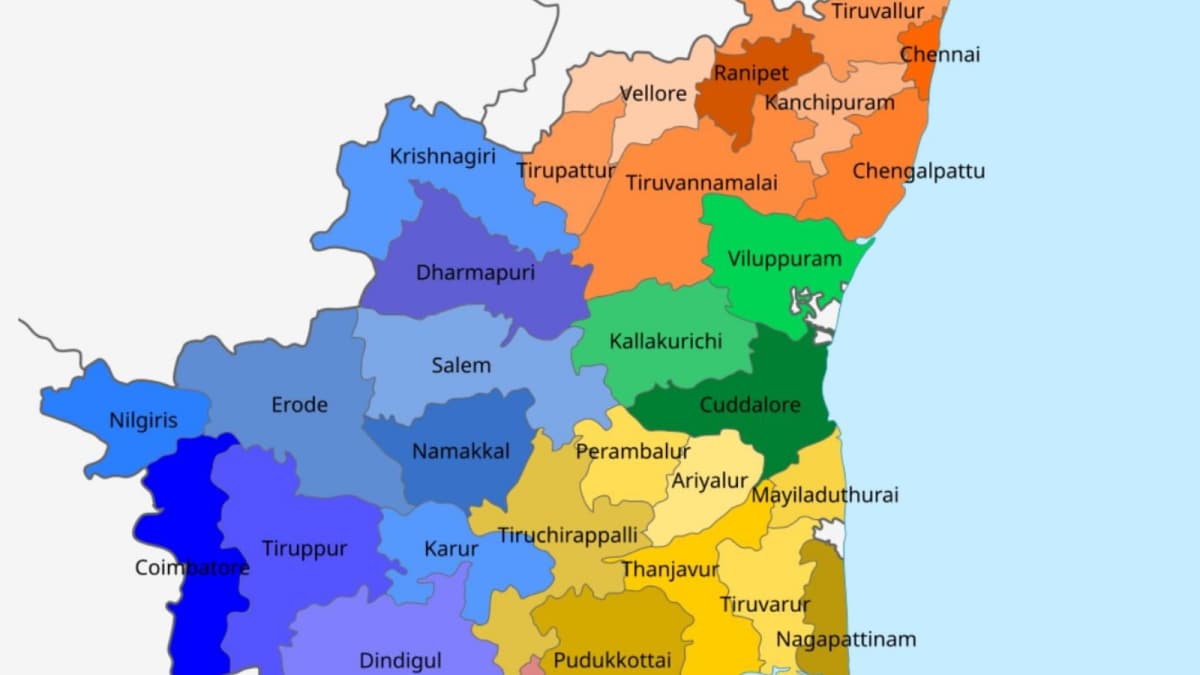At Narayan Pura, a village in Morena district of Madhya Pradesh, the local government primary school for Classes 1–5 that had been functioning for over two decades was shut down in August 2025, midway through the academic year, said a person familiar with the school’s functioning, requesting anonymity. He added that the school catered to about 20 students, mostly from OBC backgrounds, and had two teachers. It was among several institutions in neighbouring villages merged with the Sandipani School (formerly named CM Rise) in Sabalgarh, a municipal town located roughly three to four kilometres away.
Since the merger, re-enrolment has plummeted. With no transport facility and the new school being far for children under ten, only four students from Narayan Pura now attend the new campus. Others have enrolled in private schools that offer bus services, while some have stopped attending school altogether, according to a member of the teachers’ union, who also requested anonymity.
Unused school building
“It’s not that the old school building was dilapidated,” said another villager, requesting anonymity. “The structure is still in good condition, it’s just locked and lying unused. We even requested the authorities to utilise it for educational or any other government purpose, but nothing has been done yet.”
When contacted, B.L. Sharma, the Block Education Officer of Sabalgarh, said that a total of eleven neighbouring primary schools have been merged with the Sabalgarh Sandipani School, which now has a strength of 1,642 students.
RTE act provisions
Asked whether the merger of primary schools located beyond three kilometres—without providing transportation or residential facilities—constituted a violation of the Right to Education (RTE) Act, Mr. Sharma said he was not in a position to comment now. When further asked about the number of students who may have deregistered following the merger, he suggested checking with the principal of the Sandipani School, who has not yet responded to queries sent.
The Right to Education (RTE) Act, 2009, is a Central legislation that guarantees free and compulsory education for all children aged six to 14 years, and ensures that every child has access to a neighbourhood school. The norms of the act prescribe one kilometre for Classes I–V and three kilometres for Classes VI–VIII, while allowing individual State governments to define the neighbourhood limits in their respective rules.
In line with the RTE act, Madhya Pradesh, the Right of Children to Free and Compulsory Education Rules, 2011, adopted norms for defining a “neighbourhood school.” As per the act, for Classes I–V, a school should be located within the village or adjoining villages, and for Classes VI–VIII, within a distance of three kilometres. The rules also provide for arrangements such as free transportation or residential facilities in cases where children live in areas without a school within the prescribed neighbourhood limits.
Questioning rationalisation
However, this process of rationalisation and merging has raised questions about its compatibility with the Right to Education (RTE) Act, 2009. Former Professor Arun C. Mehta and universal education campaigner point out that across India, the exercise of rationalising, grouping, or merging schools is often being carried out without proper school mapping, a key planning tool used to identify ideal locations for schools and ensure equitable access for all children. Mr. Mehta added that bypassing this process can have serious repercussions on children’s Right to Education.
As per the Ministry of Education’s UDISE+ data, the country has witnessed an 8% decline in the number of government schools over the past decade (2014–2024), with the total now standing at around ten lakh schools. Madhya Pradesh has recorded the sharpest fall in government schools, and together with Odisha, the two States account for nearly 40% of the total reduction in government schools across India.
Policy context and NEP link
This sharp fall coincides with the school rationalisation and pairing exercise, further preceded in line with the National Education Policy (NEP) 2020. The NEP encourages grouping or merging of schools within a five to ten kilometre radius to form “school complexes” for better resource sharing and management.
In line with the NEP’s framework, the state government introduced the CM Rise (now Sandipani) Schools, designed to provide integrated education from kindergarten to Class XII. According to State government data, around 10,000 such schools are being established across Madhya Pradesh in two phases 2021 to 2031. Existing smaller schools within a three to ten kilometre radius are being merged into these larger institutions, and students are expected to commute to the centralised campuses. The government has also announced that transportation facilities will be provided to ensure access for students who live farther away.

 5 days ago
8
5 days ago
8








 English (US) ·
English (US) ·